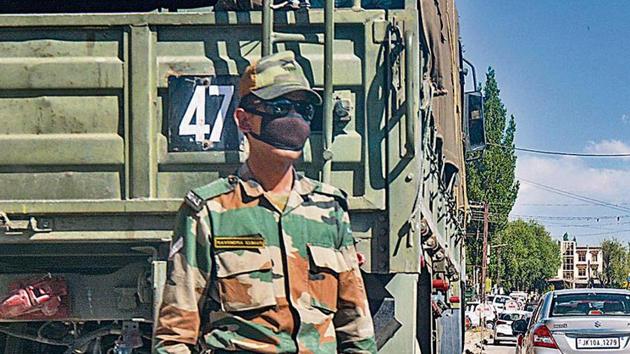Lack of trust may delay de-escalation of border conflict: Officials
Reversing the trust deficit created by the brutal clash at Galwan Valley that left 20 Indian soldiers and an undisclosed number of Chinese troops dead will be enormously hard, an official said.
The disengagement of Indian and Chinese troops at face-off sites along the disputed Line of Actual Control (LAC) and the de-escalation of the border conflict being negotiated by senior military commanders on both sides are expected to make slow progress because of “deep distrust” and the continuing Chinese build-up that questions the People’s Liberation Army’s (PLA) intent, people familiar with developments said on Thursday.

Reversing the trust deficit created by the brutal clash at Galwan Valley that left 20 Indian soldiers and an undisclosed number of Chinese troops dead will be enormously hard, and it is expected to be an impediment to the disengagement and de-escalation processes, one of the officials said on the condition of anonymity.
On Thursday, defence minister Rajnath Singh and external affairs minister S Jaishankar discussed the developments at the troubled border. They met two days after the Indian and Chinese armies agreed to work on an “expeditious, phased and step-wise de-escalation” of the conflict “on priority” during marathon talks between senior commanders at Chushul in Ladakh. Details of the discussions between the two ministers were not immediately known.
Singh was supposed to visit Ladakh for a security review on Friday, but the minister deferred his visit. His visit is being re-scheduled, officials said.
The June 30 meeting was the third attempt of the Indian and Chinese generals to make some headway in implementing a daunting disengagement plan — agreed to on two previous occasions and reiterated again on Tuesday — aimed at gradually reducing tensions aggravated by the build-up of forces on both sides of the border.
The Galwan Valley skirmish has created severe complications and any significant breakthrough in reducing tensions isn’t expected anytime soon, said a second official who has been tracking the military and diplomatic-level talks.
“There is no change in the situation on the ground at the face-off points. Both sides have hardened their military postures in the region. This is going to a long haul as we have serious doubts about the PLA’s sincerity to restore status quo ante (early April) in strategic areas, especially Pangong Tso,” he said, requesting anonymity.
Disengagement (when it begins) will involve rival troops pulling back a few hundred metres from face-off sites, with further retreat taking place in phases as the complex plan progresses on a verifiable basis on the ground every 72 hours by both sides, as reported by HT on Thursday.
The disengagement process will be “complex” even though the June 30 military discussions “reflected the commitment” of both sides to reduce tensions, officials said on Wednesday.
“The big issue here is that there is no trust between the two sides after the June 15 skirmish. The disengagement process will be long-drawn and slow as both sides will verify and re-verify it at every step with extreme caution. Things would have been different if the Galwan Valley bloodshed had not happened,” said Lieutenant General Vinod Bhatia (retd), a former director general of military operations.
More meetings are expected at the military and diplomatic levels to break the stalemate.
The June 30 dialogue between delegations led by Lieutenant General Harinder Singh, commander of the Leh-based 14 Corps, and Major General Liu Lin, commander of the South Xinjiang military region, was the second round of talks between them after the deadly clash. A disengagement plan hammered out by the two commanders in their first meeting on June 6 was being implemented in some areas, including Galwan Valley, when the violent face-off took place.
The two delegations, led by the corps commander-ranked officers, also met on June 22 and reached a consensus on disengaging from friction points along the disputed border. But things didn’t change on the ground, leading to the third meeting on June 30.
The Indian side reiterated on Tuesday its demand for the pullback of Chinese troops from several friction points along the LAC and sought the restoration of status quo ante (early April) in key areas, including Pangong Tso, Galwan Valley and the strategic Depsang plains, apart from emphasising the need for thinning the military build-up in the region.
China has not halted its military activity in Finger Area near Pangong Tso, Galwan Valley and Depsang Plains since the senior officers met for the second time on June 22. The Chinese are still at it, said the first official cited above.
Get Current Updates on India News, Lok Sabha Election 2024 live, Elections 2024, Election 2024 Date along with Latest News and Top Headlines from India and around the world.



